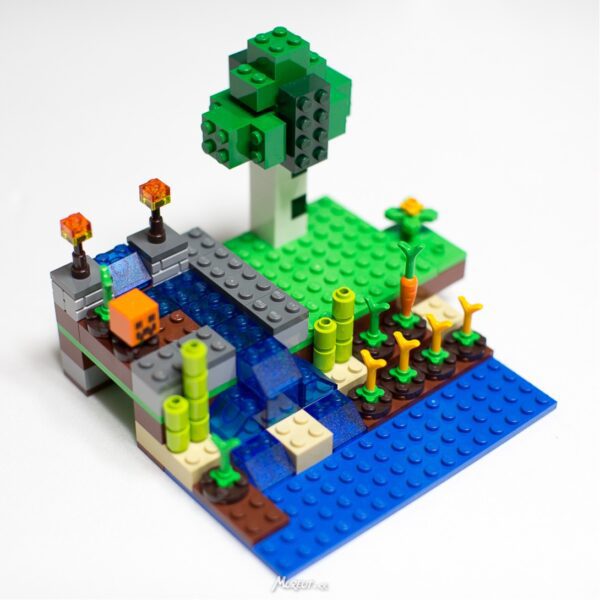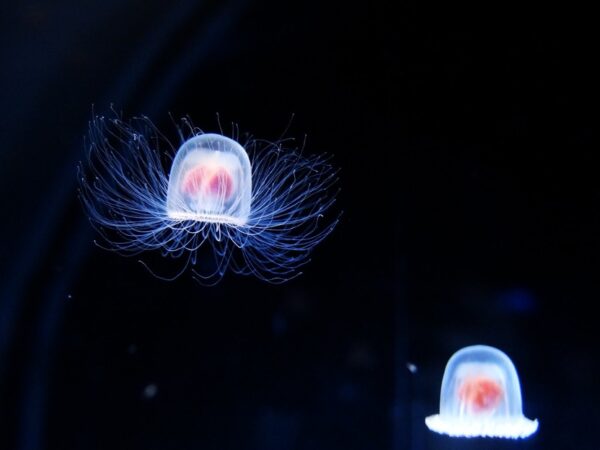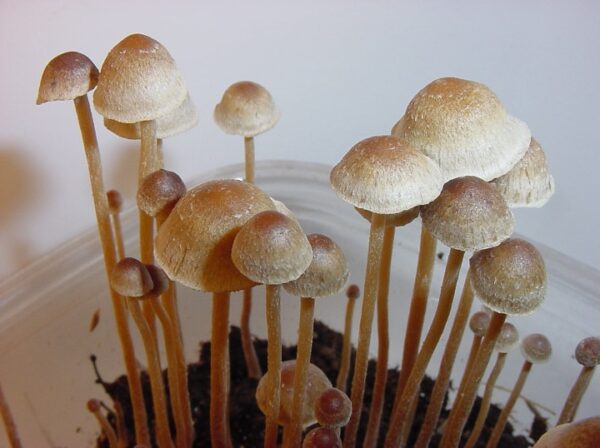To infinity and beyond: Looking at what’s next for science in 2023

2022 was an exciting year in the world of science and technology, and 2023 promises to be just as interesting! To make sure you don’t miss anything, The Mancunion’s Science and Tech section have decided to bring you our favourite discoveries from 2022, and the research predictions we’re most looking forward to learning about this year.
Favourite discovery of 2022
Click Chemistry
In 2022, the Nobel prize for chemistry was jointly awarded to three chemists, Carolyn Bertozzi, Morten Meldal and Barry Sharpless, for their collective work on ‘click chemistry’. Although the reaction involves advanced organic chemistry, all you need to understand ‘click chemistry’ is to practice with a LEGO set.
An example of this was developed by Sharpless using an azide and an alkyne in a cycloaddition reaction to give a triazole. Imagine two chains of LEGO bricks snapping their bonds together to make a singular highly-functional ring.
Although it’s not as fun as building a toy spaceship, the simple, fast and clean process creates triazoles in high yields. ‘Click chemistry’ gives a perfectly marketable synthetic route to triazoles, which are used in medicinal applications because of their anti-inflammatory properties.
An impressive £804,000 will be shared equally between the chemists for creating a new heterocyclic process, which is projected to produce interesting chemicals in the future.

Bioengineered bacteria-based rocket fuel.
Any news on renewable alternatives to current fuels is always exciting, and this new ‘energy-dense biofuel’ developed by Cruz-Morales et al., gets extra cool points for being a replacement for rocket and jet fuel.
The renewable alternatives are based on efficient cyclopropane-type fuels: the 60-degree bond angle between carbons in cyclopropane creates high strain on the molecule, and increased molecular strain leads to an increase in the fuels’ net energy of combustion.
Scientists at the Lawrence Berkeley National Laboratory used this concept to bioengineer jawsamycin, a naturally occurring molecule with cyclopropane functional groups, into a fuel capable of powering rockets.
These developed fuels are not currently commercially viable as they are produced on such a small scale. Yet, it’s a first step in a very interesting direction for environmentally friendly fuels.
Mechanisms of immortality discovered
First discovered in the 1990s, the ‘immortal’ jellyfish Turritopsis dohrnii demonstrated an extraordinary survival skill of reversing the developmental process. Transforming from a fully grown creature back into its younger version, a polyp. This process can repeat over and over in response to starvation or any physical damage – essentially making these jellyfish immortal.
These naturally intrigued scientists, who endeavoured to understand the underlying mechanisms further. Studies proved that the cells of these jellyfish can transform from one type of cell into an entirely different specialised cell, in what is effectively cell recycling.
In 2022, scientists uncovered the genetic code responsible for this immortality. Genome variations in these jellyfish mean that it is better able to copy DNA and repair any damaged DNA. One particularly exciting find is that these jellyfish are better at maintaining the length of telomeres. These are sequences found at the end of chromosomes that are commonly shortened in humans as we age.
Whist this discovery isn’t likely to make humans immortal, it could propel research in human ageing and regenerative medicine. Eventually, this could lead to new insights into age-related diseases – such as cancer and Alzheimer’s disease.

Progress in Semiconductor Research
One of the most important advances in physics in 2022, was research into the properties of a new semiconductor which was first discovered in 2015. These properties could make it one of the best semiconductors produced to date.
Semiconductors are found everywhere: in your phones, computers, GPS devices and all tech. They have allowed computers to shrink from the size of buildings to the size of your pockets. The reason for their importance is the interesting physics of their electron energy levels. In a crystal the delocalised electrons reside in discrete energy bands. Only if the highest-level occupied band is not fully filled, having some positively charged vacant states, called holes, can the material conduct electricity.
Semiconductors have a full band but with small energy band gaps, meaning it requires little energy to promote some electrons from the full band to the empty one above it. This means that electrons, and the holes they leave behind, can move around the crystal allowing it to conduct electricity.
In 2022, scientists at MIT and the University of Houston demonstrated that cubic boron arsenide has a very high hole and electron mobilities. In contrast, most semiconductor devices have high mobility for only one type of charge carrier. This means the new semiconductor could potentially carry much larger currents with less resistance. In addition, experiments in 2018 showed cubic boron arsenide to have a very high thermal conductivity, making it less likely to overheat.
All this research provides evidence that cubic boron arsenide could be one of the best semiconductors ever produced. With vast potential in both engineering and physics. However, more research is needed to better understand the material and the economic and environmental impacts of its production.
The James Webb Space Telescope
Following in the footsteps of its older sibling, Hubble, the James Webb Space Telescope (JWST) launched into space in December 2021 as the world’s largest, most powerful, and most complex space science telescope ever built.
The JWST sits 1 million miles away from us at Lagrange point 2, or L2. Here, the gravitational pull of the Sun and the Earth are equal to the centripetal force required for a small object, like a space telescope, to move with them at a fixed position without needing much fuel. This allows the JSWT to orbit in a constant pattern, at a spot which is close enough to allow communication with Earth and keeps the Sun, Earth, and Moon behind the telescope, using their solar energy to power the telescope.
The JWST’s mirrors direct light from the surrounding universe to the scientific instruments on the telescope, which then filter the light and focus it onto the detectors. The two types of detectors onboard the JWST, the near-infrared and mid-infrared detectors, allow us to look at the universe through longer wavelengths than before.
Using these large wavelengths, we can watch the formation of stars and planets, study black holes and find cold dark matter. Not only that, but we will be able to observe the birth of the very first stars and galaxies following The Big Bang.
As the universe expanded, the ancient light from these early galaxies was stretched, via a process called cosmological redshift, into infrared wavelengths. The JWST can detect this light, allowing us to study the oldest parts of our universe and understand it in a way never before possible. It takes some amazing pictures too.
NASA returns to lunary exploration
The moon landings were a defining feature of the 20th century, but most of us are too young to have watched them as they were happening.
But fear not, for NASA is sending humans back to the Moon, hopefully within the next five years! They plan to do this during the third mission of the Artemis Program – Artemis III. Although this mission will only launch in 2025 (if the program remains on schedule), the first mission of the program was successfully completed in December 2022.
Artemis I was an un-crewed flight that sought to test the Orion spacecraft and the Space Launch System (SLS) rocket. After successfully launching from the Kennedy Space Center in Florida, the craft completed two flybys of the Moon before making its way back to Earth and splashing down in the Pacific.
The mission may not have taken any astronauts to the Moon, but it marks NASA’s return to lunar exploration. The successful testing of both Orion and the SLS is an auspicious start to the Artemis Program that will hopefully lay the foundation for returning humans to the Moon in 2025.
Most excited to see in 2023
Natural dyes
With the increasing pressure on the chemical industry to become more sustainable, natural dye technology is set to become a significant area of research in 2023.
Keracol, a Leeds-based chemical company, have began to use waste plant materials from the farming industry to source natural ingredients. They are later refined for their use in dye and cosmetic products.
Keracol’s cofounder, Professor Chris Rayner, used blackcurrant waste generated from the production of Ribena to create a pomace and isolated its natural dye in a powder. The anthocyanin from the blackcurrant was then used to create a natural purple hair dye, which created different shades depending on the concentration used.
Professor Rayner also used dyes to create a variety of colours on a sustainably created polylactic acid dress that was displayed in the National Science Museum.
The production of synthetic dyes can require substantial amounts of water and are often toxic to aquatic and human life. Therefore, creating environmentally friendly alternatives for the fashion and art industries is essential to reducing their water waste.
Mushroom batteries
In November 2022, a group of Austrian scientists published their research developing mushroom-based batteries – MycelioTronics. The properties of fungal mycelium skins make it a great substitute for plastic and paper in the batteries we typically know. The MycelioTronic research showed that mycelium batteries had high capacities and could be used to power a Bluetooth device.
All the parts of these mycelium batteries have been made to be separable, so both the metal components and the mushroom components can be recycled fully. This makes them a very sustainable alternative to plastic batteries.
It will be interesting to see how biodegradable and recyclable materials will be used in 2023 to begin to replace the billions of pieces of plastic and silica currently littering the technological world.
Psychedelics used in treatment for mental health
Psychedelics like MDMA and ‘magic mushrooms’ may be illegal in most countries, including the UK, but they show promise for improving treatment for serious mental health disorders. A clinical trial in 2012 prompted interest in these hallucinogenic drugs as signs of antidepressant action were seen after just two doses of psilocybin, the active ingredient found in ‘magic mushrooms’.
Psilocybin has this response in patients due to the activation of receptors normally activated by serotonin, the chemical which affects mood and emotions. Promising results have also been seen in patients with anxiety, PTSD and addictions when treated with psychedelics.
Further steps were taken in 2022, as Canada approved the use of psilocybin in patients with severe and debilitating mental illnesses, such as severe treatment-resistant depression. The US is set to follow with Oregon becoming the first state to legalise the use of this psychedelic.
These changes in regulation, and the opening of the first psychedelic drug trial firm in London, suggest we may see exciting changes in the landscape of mental health treatment in the UK this year. Certainly, there will be a change in attitude towards these drugs from when they were first criminalised in the 70s. With the acceleration of research into psychedelic-assisted therapy in collaboration with the NHS.
Find out what it’s like to participate in this kind of research here.

Gravitational wave detectors
The piece of research that most excites us in the year ahead is the new gravitational wave detector coming online. This device, called the ‘Matter-Wave Laser Interferometric Gravitation Antenna’, searches for gravitational waves, a key prediction from Einstein’s theory of general relativity.
Gravitational waves are ripples that travel through the fabric of spacetime and are only detectible when produced by some of the most massive astrophysical events, like binary star systems or colliding black holes. They are vital to physics research, as they help physicists to detect dark matter. Gravity still raises many unanswered questions and this device could help physicists to delve deeper than previous detectors, like LIGO, have been capable of in the past.
Treatment for Alzheimer’s Disease
Over 55 million people live with dementia, and 60-70% of these cases are thought to be Alzheimer’s Disease (AD). This means there is a dire need for an effective treatment to tackle the root of the problem within the brain.
Two such treatments have been approved so far. Aducanumab, sold under the brand name Aduhelm, is a monoclonal antibody which aims to target and reduce the build-up of beta-amyloid plaques that underlies the disease. It was given accelerated approval by the FDA in June 2021, making it the first new treatment approved for AD since 2003. It was also the first to target the pathology of the disease, rather than its symptoms.
On 6 January 2023, the FDA approved a second drug via the accelerated approval pathway – lecanemab. Sold under the brand name Leqembi, this is another monoclonal antibody that is administered via intravenous injection and enters the brain to remove the harmful amyloid plaques.
In November 2022, phase II trial results showed that lecanemab slowed cognitive decline by 27% over 18 months of treatment, making it the first drug to show efficacy in this way. Although neither of these drugs are a cure, they provide hope that one may not be too far away, making things easier for those suffering.

dearMoon
Artemis is not the only program with the Moon in its sights this coming year. The dearMoon project, funded by Japanese billionaire Yusaka Maezawa, plans to take eight civilians on a flyby of the Moon.
Maezawa has contracted SpaceX for the project, and the trip will be taken on the company’s Starship, which is still in development. This will be the most ambitious example of space tourism to date, taking the commercialisation of space travel to the next level.
Other Moon-bound objects include NASA’s Lunar Flashlight, a small satellite that will investigate ice deposits on the Moon. Water was detected on the Moon in 2009, but the exact extent and distribution is still not comprehensively known. The exciting thing about this mission is that it isn’t gathering data for purely academic reasons – if it discovers large ice deposits, these could be used as valuable sources of water for future Artemis missions to the Moon’s surface.
Following the unfortunate failure of the Chandrayaan-2 mission in 2019, the Indian Space Research Organisation (ISRO) will be sending another mission to the Moon, Chandrayaan-3. Designed to repeat the mission objectives of Chandrayaan-2, this mission will attempt a soft landing on the lunar surface – a landing in which the craft speed is negligible at touchdown. If successful, this flight will land the first Indian rover on the Moon.








